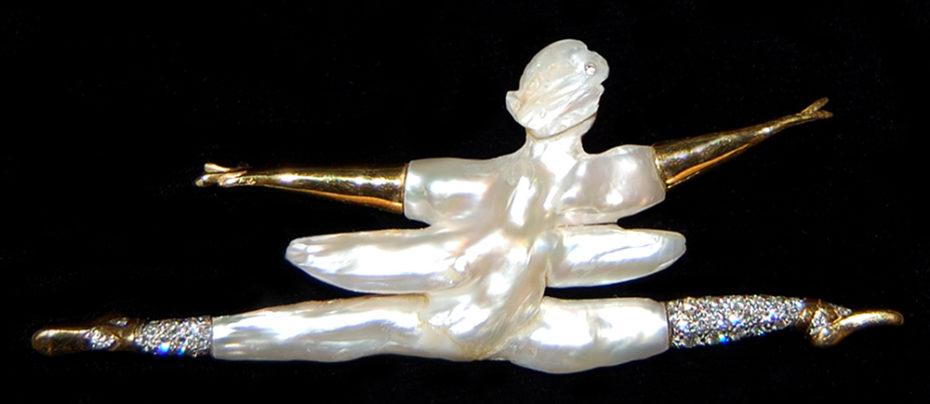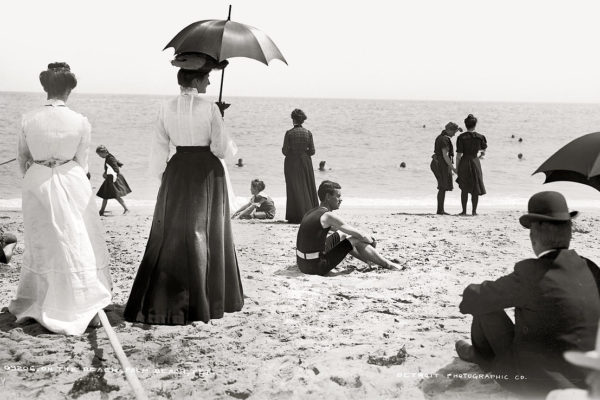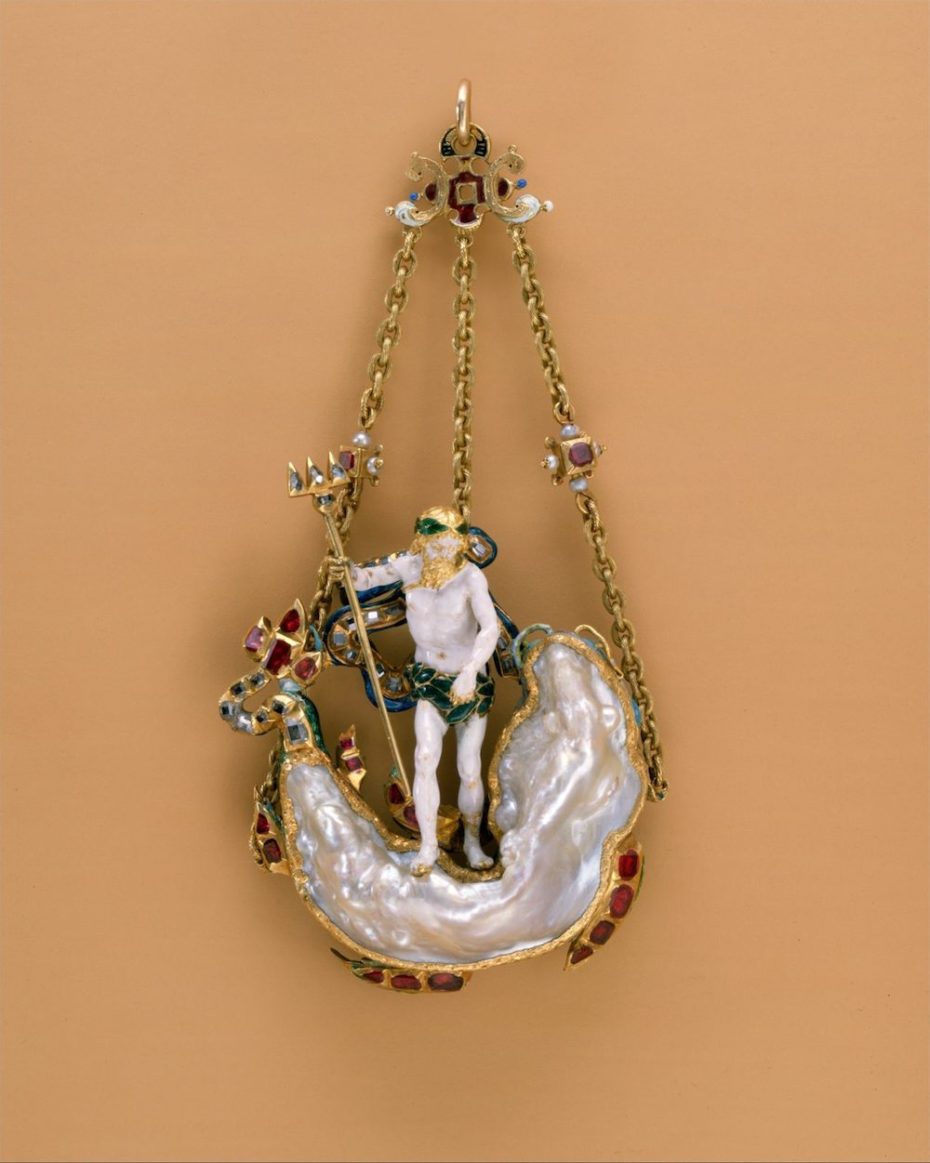
Pearls have always been in a league of their own. As souvenirs from the depths of New World waters in the 15th century, they were simply something diamonds, emeralds, and rubies could never be: alive. Pearls were ghostly. They were animal, and alien. They ushered in a quiet war and a “Pearl Rush” of their own that nearly drove ye olde rich people mad, and became the ultimate status symbol. (There’s a reason Cleopatra casually swallowed one to prove her power at a banquet). Luckily for us, nowhere is the curious, charged heritage of pearls more deliciously captured than through the tradition of pearly Renaissance figurine pendants…
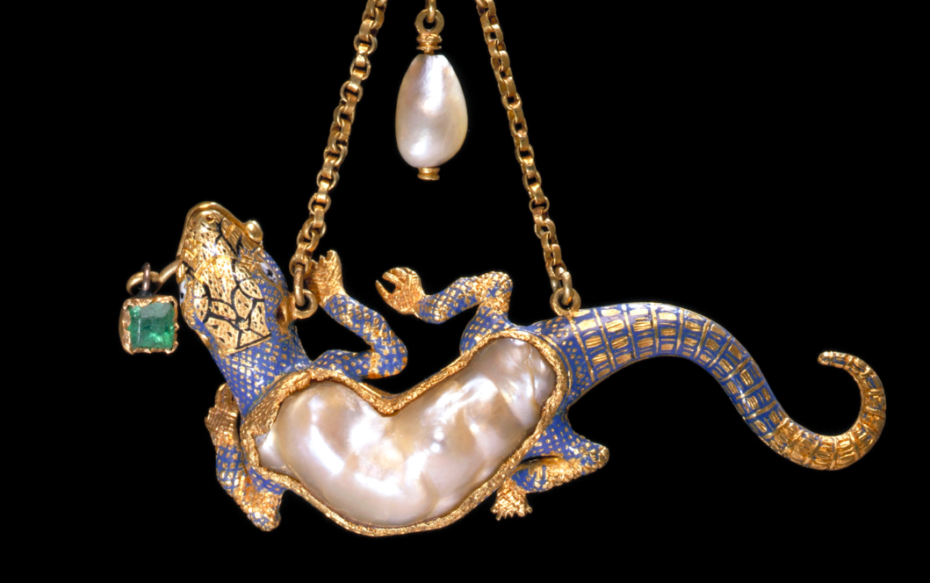
Women riding seahorses. Salamanders eating emeralds. Cherubs with pearly behinds. Gods, monkeys, castles, and anything else that a pearl’s shape could inspire made its way into these figurine pendants. A lot of this was largely thanks to the rise of Humanism during the Renaissance, which is basically a fancy word for becoming a hippie with a high education; it championed the study of Ancient Greek philosophy, poetry, and the like, planting the seeds for what we now look to as a university’s Humanities department. Coupled with the opulent open-mindedness of the Renaissance, it gave us these wonderfully grotesque, hybrid pendants that began popping up across Europe. The most famous of the lot in the ~jewellery world~ is the “Canning Jewel” (1560), which was gifted to one of the Moghul Emperors of India by the Medici family:
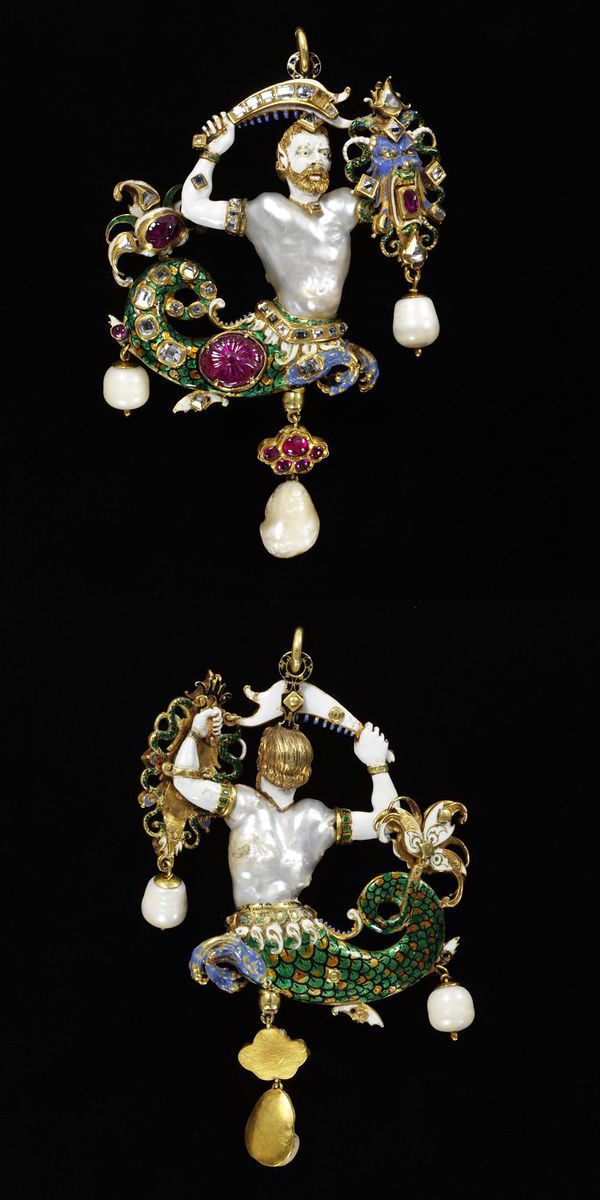
The Canning Jewel’s pearl is undeniably wonky in shape. Yet, as the abs of a ripped Triton, it was perfect. The merman king of the seas is pictured benching a sword with table-cut diamonds, his tail curling up with enamelled gold, a dash of rubies, and some other baroque and blister pearls, because, well, why not. This was the age of exploration, and enlightenment. Sometimes the pearls were more an embellishment, but often they became the bodies of fantastic creatures. Unfortunately they’re a bit out of our price range: today, the Canning Jewel would sell for over half a million bucks, and its sister pendants don’t run cheap either. So we’ll just do some window shopping…
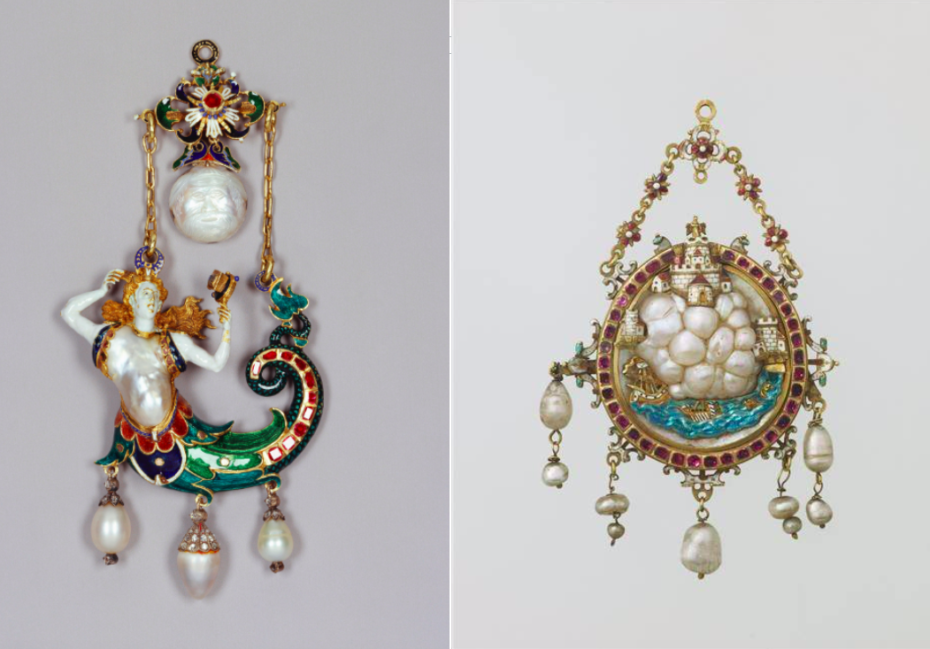
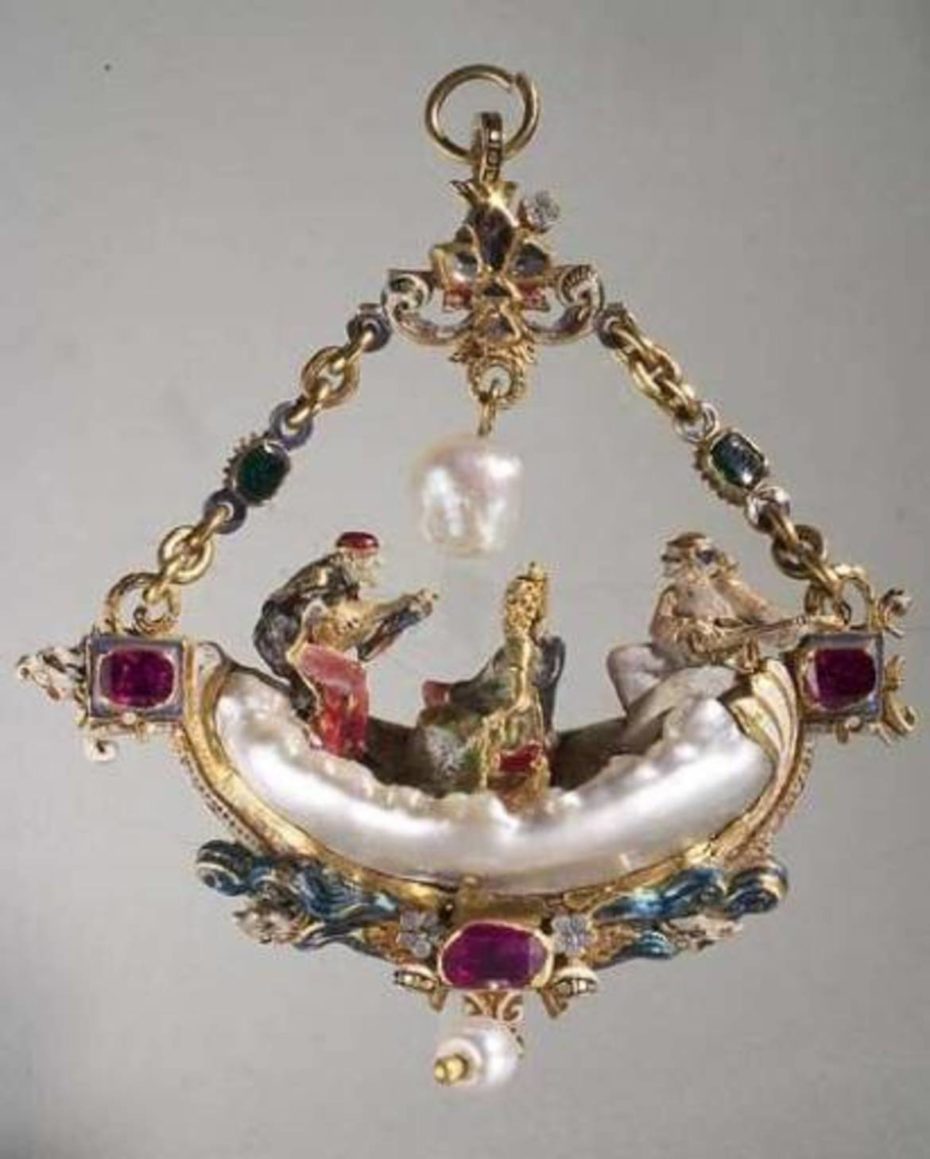

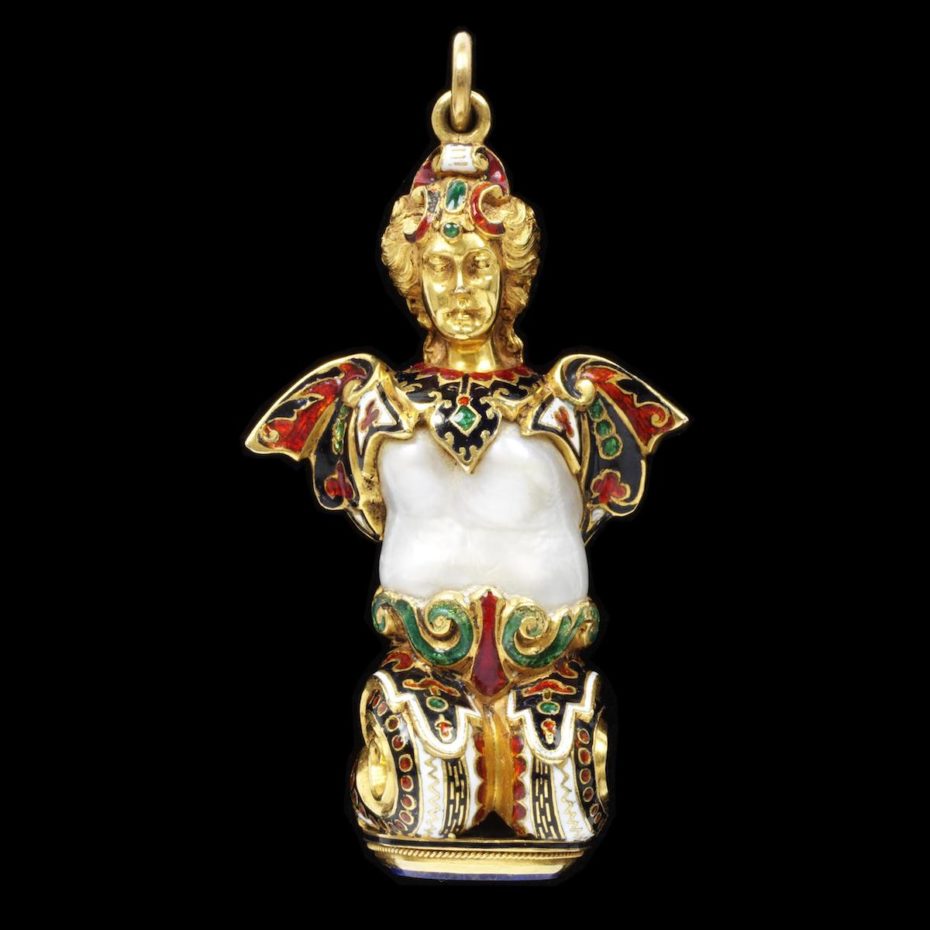
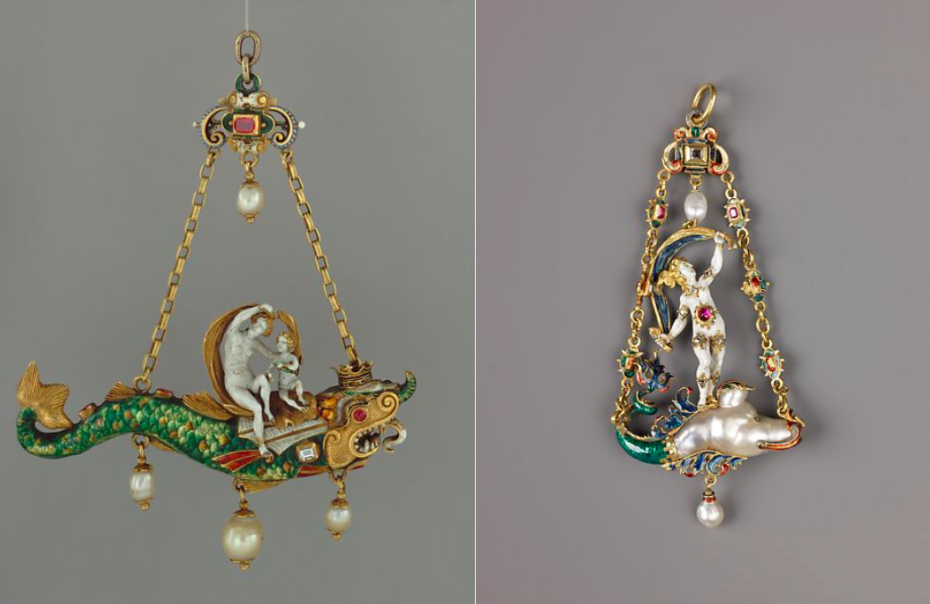
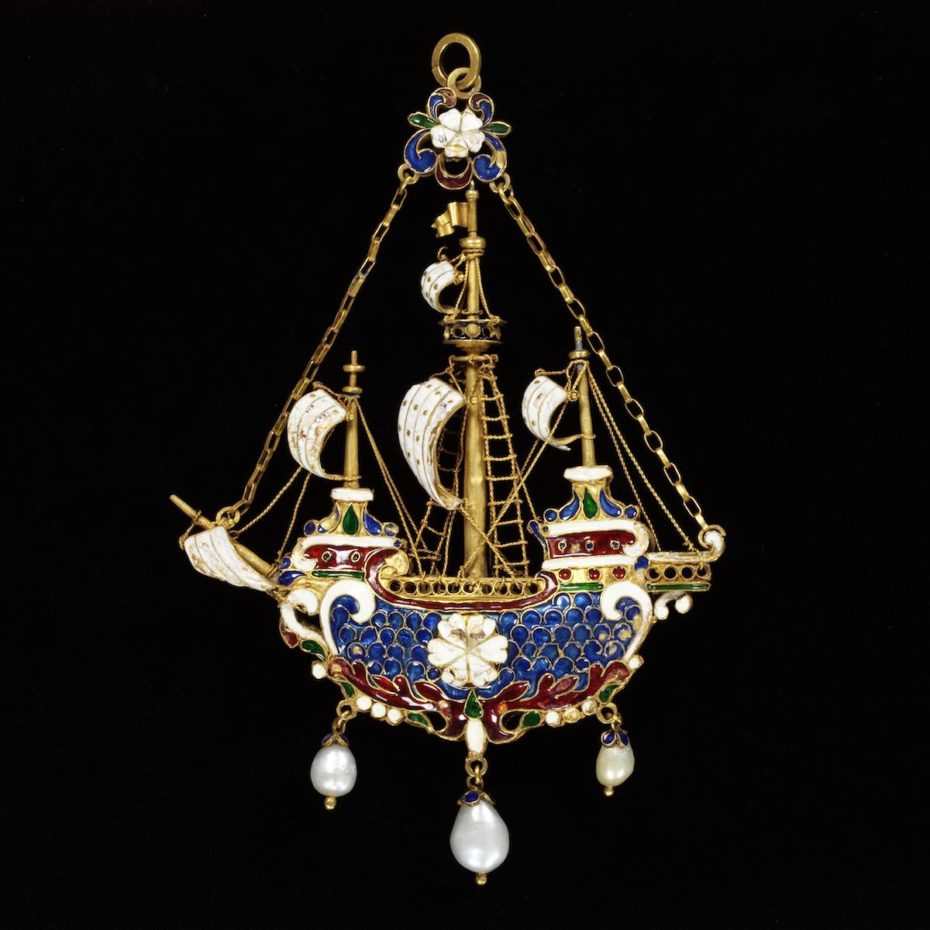
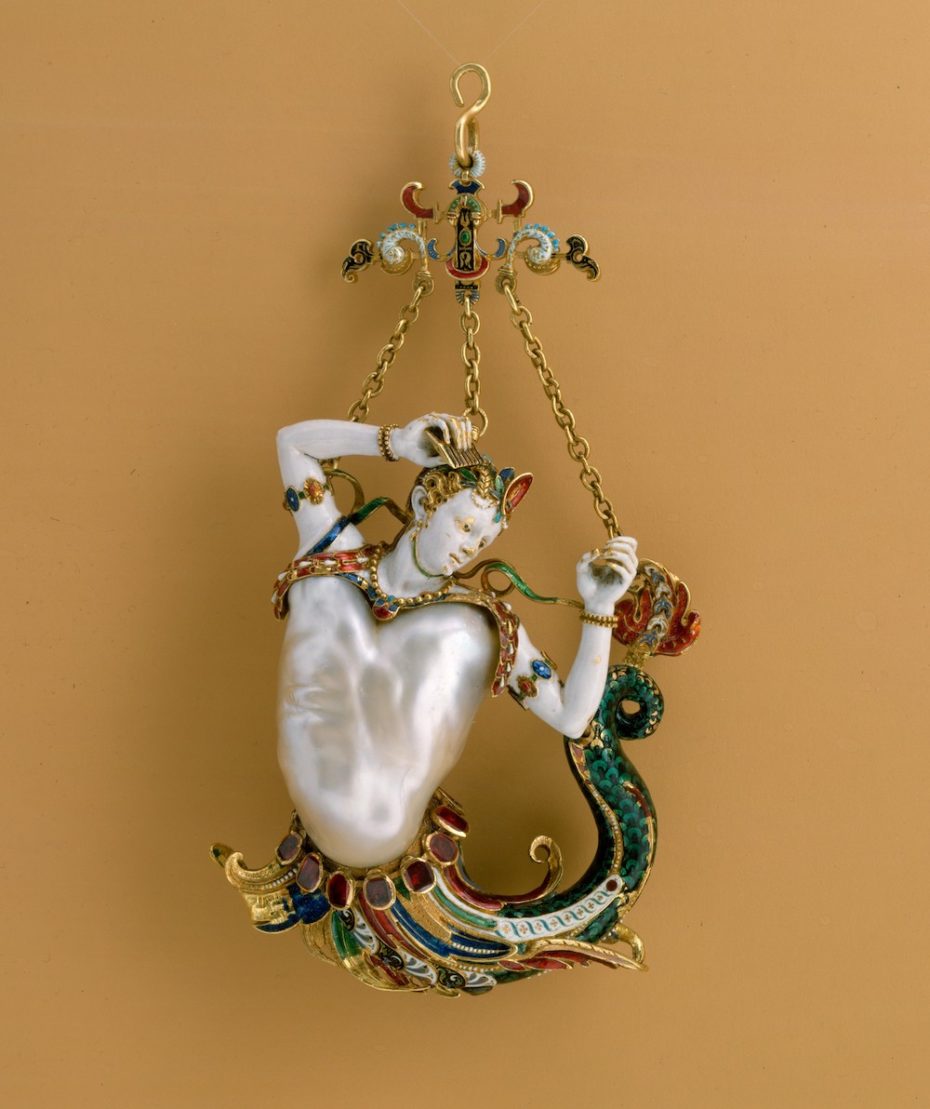
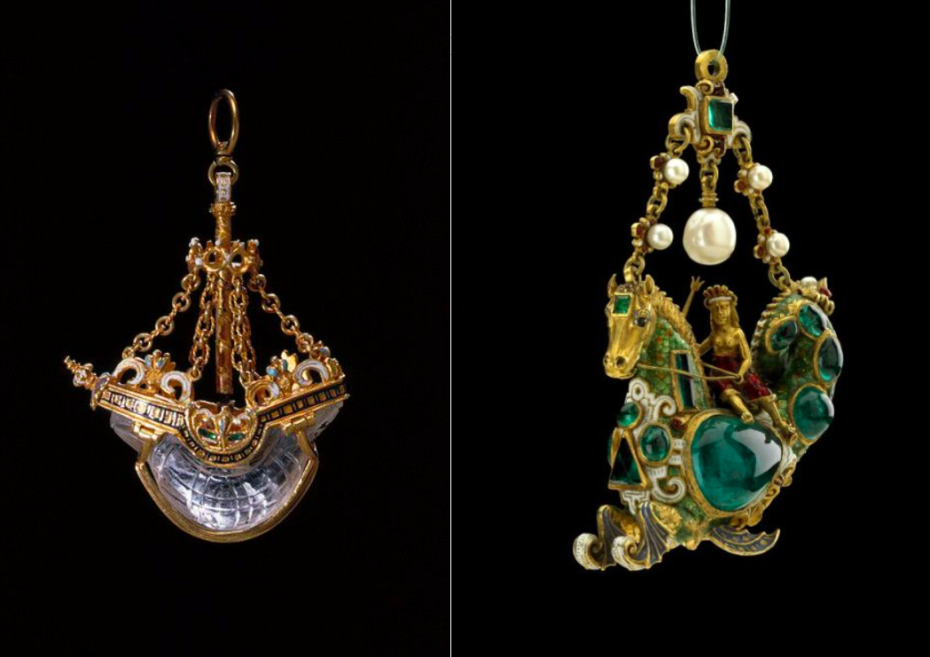
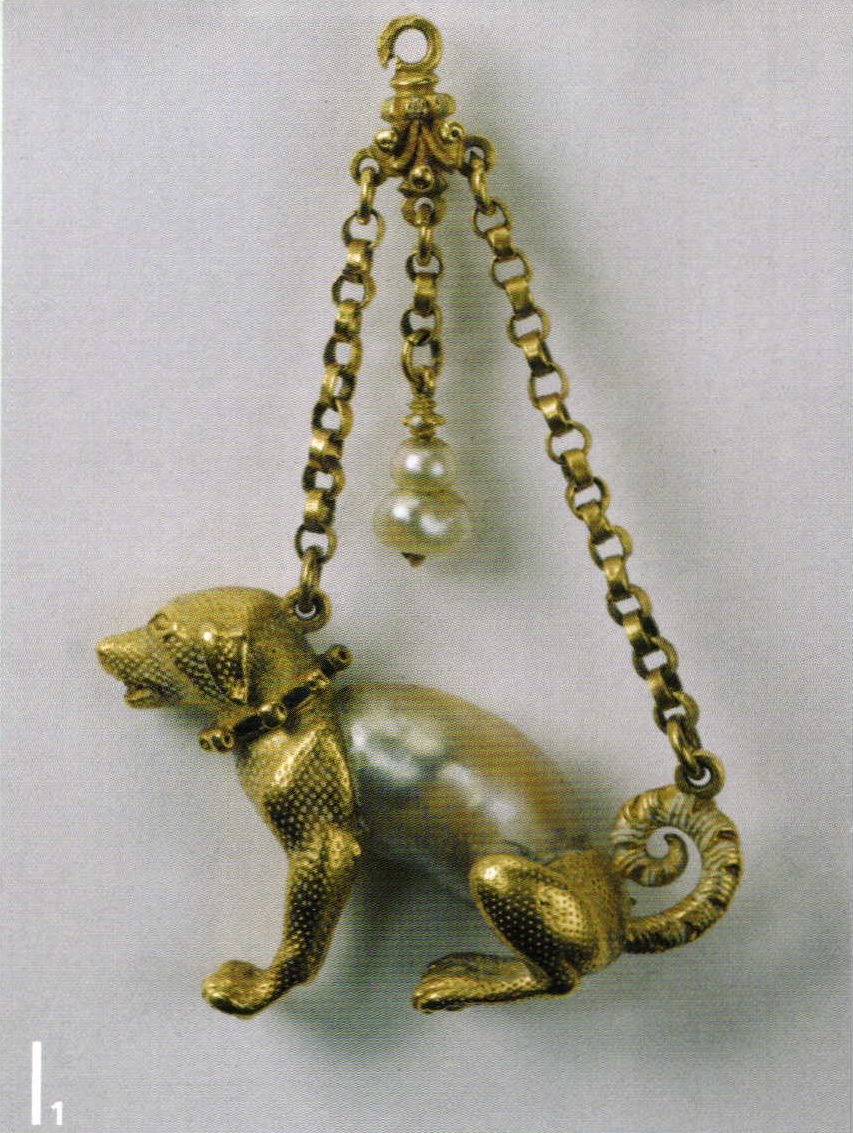
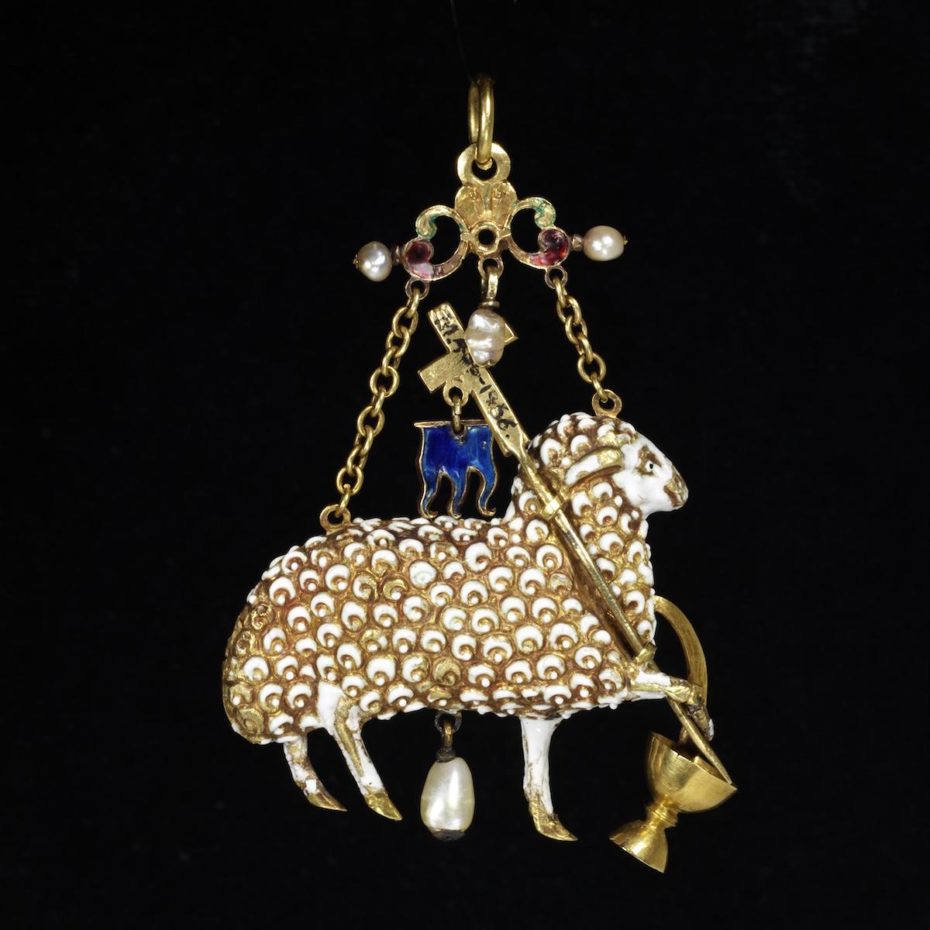
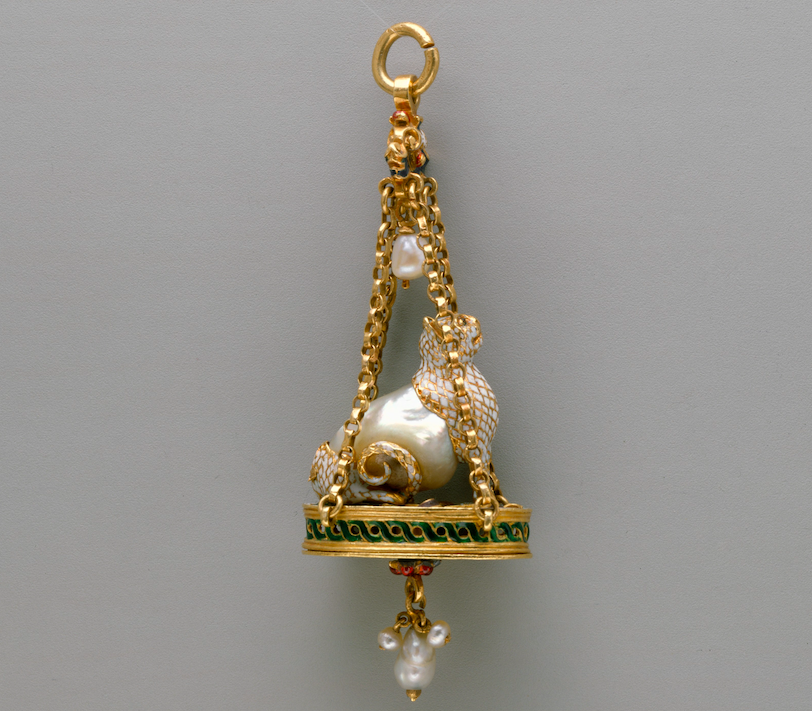
Again, folks were having a field day with pearls because they were relatively new. Crusaders brought them to Europe, and in the Middle Ages, up into the 19th century, they were believed to have medicinal and spiritual healing powers for sicknesses caused by melancholy. You’d dissolve them in vinegar, add in some milk and honey, and boom – you were in fighting form.
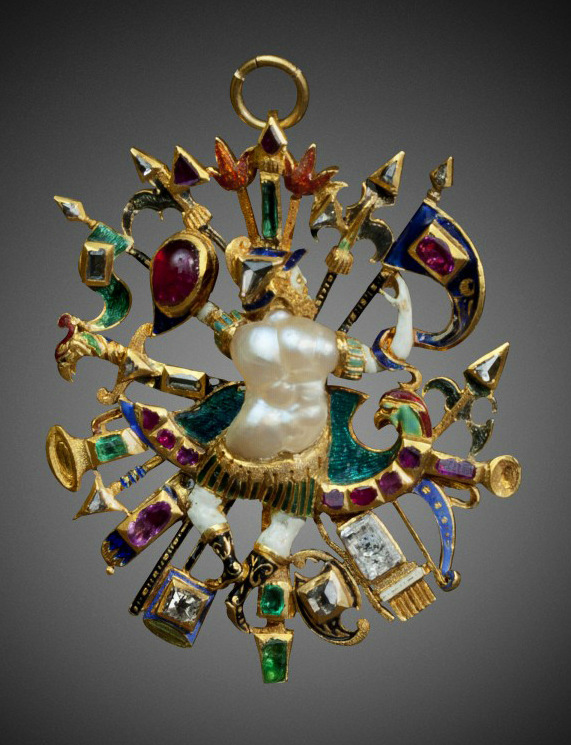
Queen Elizabeth I held her head high with what was described as “a bushel of pearls” around her neck. Even when she died, she was buried with pearl medallions on her shoes, and wore them to flaunt her power. Trade with Italy, which was filled with master gold and pearl jewellers, hit a stride in the 1400s and opened up the demand for them amongst the wealthy across Europe. The introduction of pearls from the Americas, of course, truly launched the “Pearl Age,” in which the the gems were so popular the elite started passing actual laws about who and who couldn’t wear them in the upper echelons of society. For so many members of the population, they were an elusive, incomprehensible form of currency that could be traded for many uses (medicinal, spiritual, aesthetic). Kind of like the bitcoins of the Renaissance, if you will.
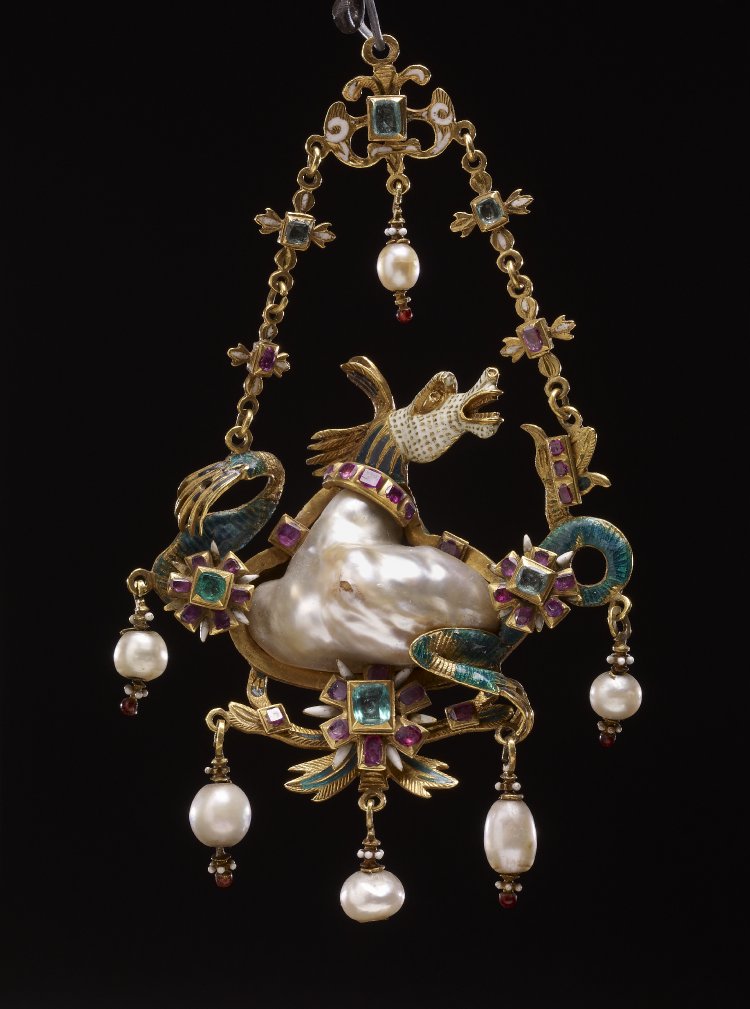
The 16th century Spanish explorer, Balboa, discovered a stunning 200-grain, pear-shaped pearl in the Gulf of Panama that the Queen of Spain named after her favourite falcon, “La Peregrina“. It was stored safe for centuries in the eye of the royal crown. Then, in 1969, the Richard Burton bought it for today’s equivalent of about 250K for Elizabeth Taylor…whose dog chewed it up.
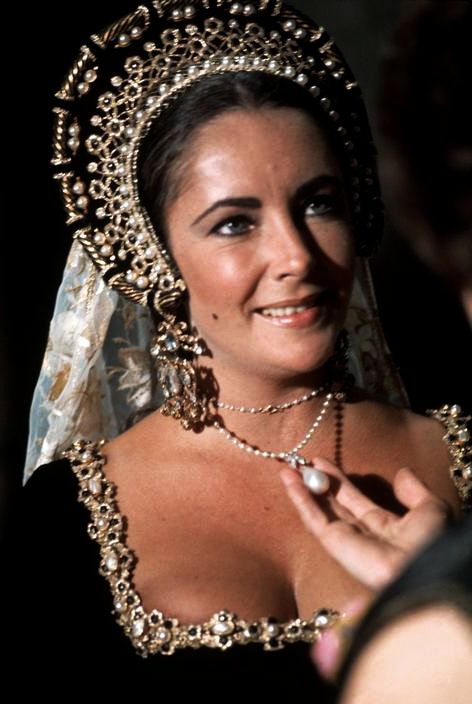
(1969)
It wasn’t until the dawn of the 20th century that pearls became less, well, intense through the rise of cultured pearls. Still, the Victorian Era often revisited the grotesque gems from the Renaissance in their own creations, and it looks like British jewellers such as Rowlandson will craft the occasional pearly piece in the Renaissance tradition. Check out this ballerina doing a jeté that was made in (gasp!) 1999. Looks like grotesque glamour ain’t dead after all.
